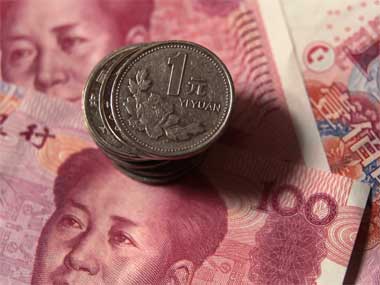The Chinese currency after a lot of hemming and hewing has at last made the grade into the SDR basket. SDR or special drawing rights is not a traditional currency in the sense that its underlying value is the weighted average of the US dollar, British pound, Japanese yen and euro, with the greenback looming large. And the latest to make the grade on the quinquennial review carried out by the International Monetary Fund (IMF) is the Chinese currency. SDR is not a floating currency either so much so that it cannot be purchased or sold in the international currency markets. It is used by the IMF members to settle their inter se accounts through books. In other words, its utility is at best felt by governments of the IMF members. It played but a very small and insignificant role in the 2008 world financial crisis with its ground zero in the USA. Therefore, Yuan’s elevation is indeed a non-event except that it has stoked larger expectations as to whether this is a precursor to the currency sooner than later becoming yet another reserve currency. Indeed, will it become another floating currency, freely available in the international market a la the greenback and euro? This doubt rears its head because though the yuan is a freely usable currency, it is not yet a freely convertible currency. [caption id=“attachment_2387184” align=“alignleft” width=“380”]  Reuters[/caption] For example, I cannot go to a bank and buy yuan the way I buy US dollars for sending to my son pursuing higher studies abroad or for my own travel needs. To be sure, the yuan may be the fifth largest currency in the pecking order of international payment by trade, investors and travelers with the US dollar leading the pack with a 43 percent share, followed by euro with a 28 percent share, pound 9 percent, yen 2.9 percent and yuan 2.5 percent but this in itself means nothing because a substantial part of this happens in the dealings in Hong Kong which is a country within a country as far as China is concerned. In any case, there are capital controls still in place at least for Chinese residents even though they have been considerably relaxed for foreign investors. Furthermore, China ranks pretty low when it comes to transparency and reliability of its financial data with its notorious shadow banking hiding a lot of bad debts. The yuan even today floats within a tightly defined range set by its central bank which is anathema to any floating currency which by definition must not be hamstrung by any restrictions. While the US dollar enjoys the numero Uno status, it is amenable to pulls and pressures of other countries especially the Gulf what with petrodollars they are awash with petrodollars. But otherwise the US dollar, due to propitious circumstances and the first mover advantage it gained in 1944, remains the only true global reserve currency what with US dollars sloshing around outside the US estimated be as much as within the US. It is therefore a trifle curious that the IMF was persuaded to include the yuan in the SDR basket but as an article in Quartz points out, it is not going to become a global reserve currency in the foreseeable future. True it still remains the world’s largest exporter and the largest economy after the US but its currency inspires confidence only among those who have strong economic ties with China. Many of the capital goods manufacturers of China give or arrange ‘tied’ loan so that both the currency and such goods are sold but that is about it. The oil exporting nations are happy accepting dollar payments rather than in any other currency even though the Euro tried its best to break the greenback’s back.
Yuan inspires confidence only among those who have strong economic ties with China
Advertisement
End of Article


)

)
)
)
)
)
)
)
)



